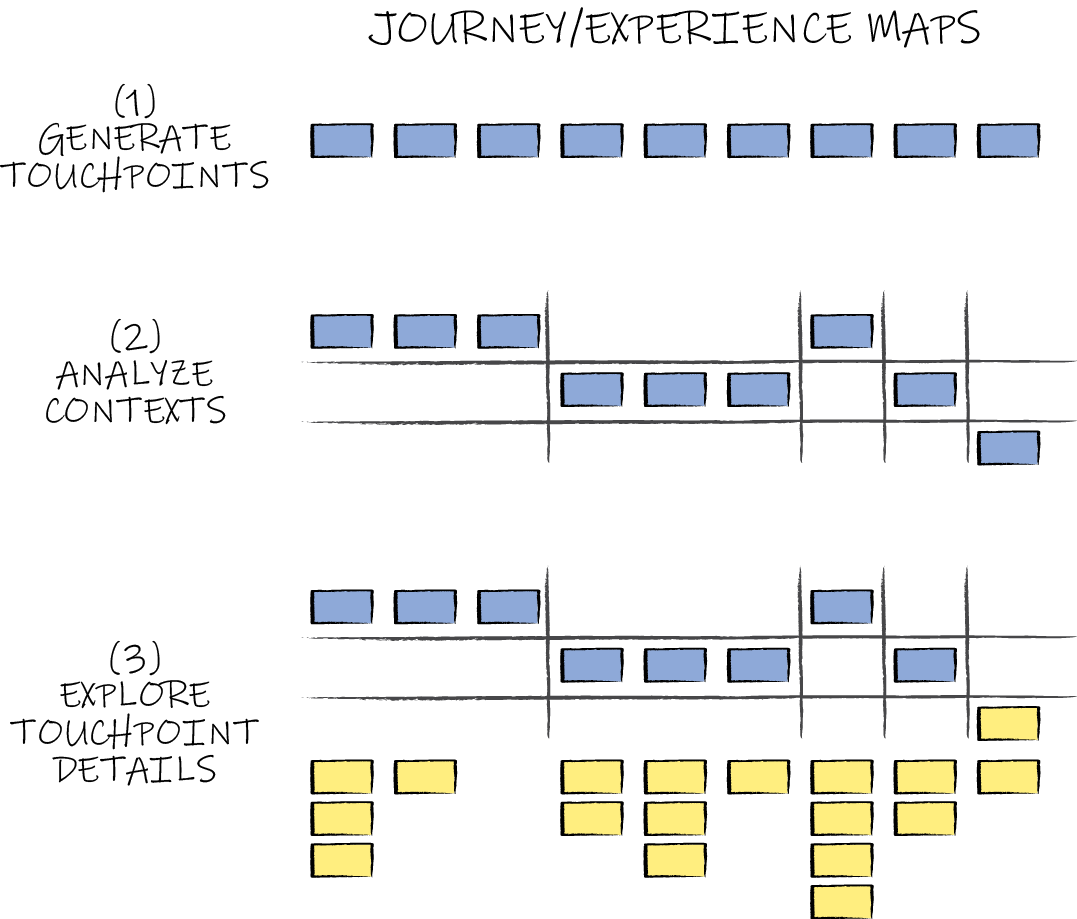Chapter 16. Understand How Products Fit Together with Journey Maps
[ 16 ]
Understand How Products Fit Together with Journey Maps
Optimized touchpoints won’t help if users never come across your product in the first place. User journeys and experience maps show teams the broader landscape where the product lives, so they can make sure the product fulfills user needs in a useful way.
In this chapter, we’ll learn how teams can map user journeys into and out of your product landscape. While we’ll learn how to map the user’s journey as a series of activities, the journey unlocks its real value when it serves as a continuous touchstone for the team.
How Journey and Experience Maps Work
User journey workshops are messy, illustrated discussions that begin with a false start and iterate until everyone gets tired or satisfied with what you’ve mapped. Journey mapping combines touchpoint generation with an analysis of the different channels and phases to create a high-level view into how a user moves into and out of your product ecosystem (Figure 16-1). That’s a lot, but teams work through mapping in three steps:
- Working together, generate touchpoints
- Analyze the journey to understand the context
- Explore touchpoints in detail
At the end of the activity, the team will have created a list of touchpoints and identified when the user moves from one phase to another.

Figure 16-1
Generate touchpoints ...
Get Collaborative Product Design now with the O’Reilly learning platform.
O’Reilly members experience books, live events, courses curated by job role, and more from O’Reilly and nearly 200 top publishers.

